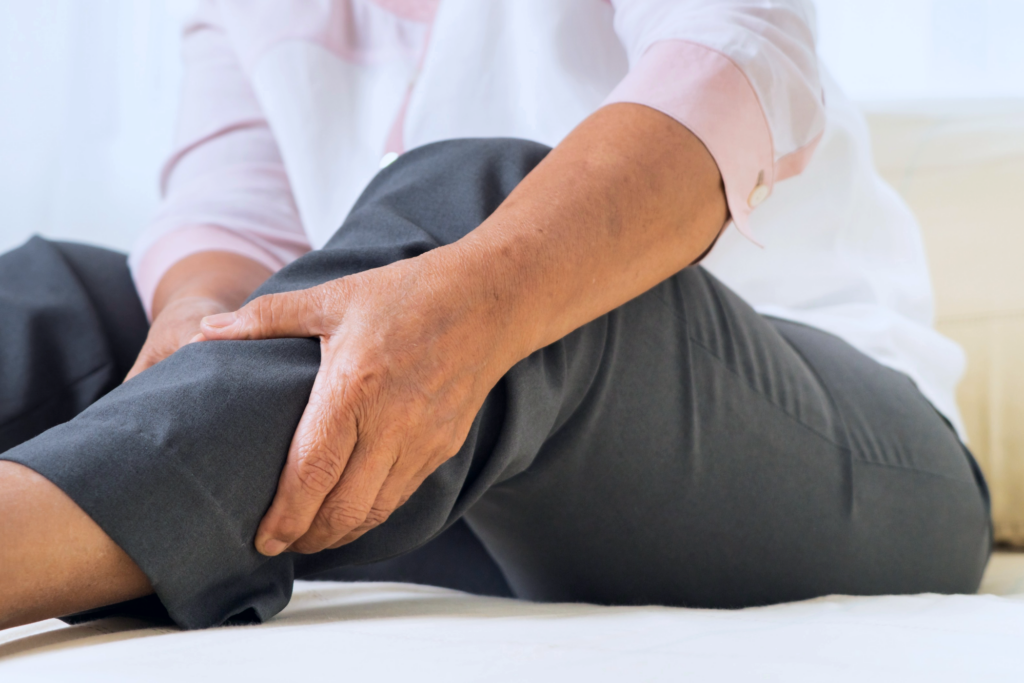Do your legs often feel heavy and tired by the end of the day? Do you notice swelling as the hours pass, accompanied by an unrelenting sense of heaviness and fatigue?
If so, you’re not alone. Many individuals experience these symptoms, and they may be indicative of a condition known as chronic superficial venous insufficiency (CVI). CVI is the underlying condition that causes what are commonly known as varicose veins.

Understanding Chronic Superficial Venous Insufficiency
Chronic superficial venous insufficiency occurs when the valves in the superficial veins under the skin in the legs fail to function properly, leading to blood pooling under pressure in the lower legs. This condition primarily affects the veins close to the skin’s surface, resulting in a variety of uncomfortable symptoms as the legs swell due to pressure from the poorly functioning varicose veins.
Symptoms of CVI
- Leg Swelling: One of the hallmark signs of chronic venous insufficiency is the gradual swelling of the legs as the day progresses.
- Heaviness and Fatigue: Individuals with CVI often describe a persistent feeling of heaviness and fatigue in their legs, especially after prolonged periods of sitting or standing.
- Aching and Discomfort: The aching sensation in the legs can persist even when you lay down to rest at the end of the day.
Identifying if the Culprit is CVI and Considering the Treatment Options
If you find yourself nodding along to these symptoms, it might be time to explore if the cause of your swelling is related to CVI and if so, potential treatments to get your legs feeling better. Several options have shown promising results in relieving the discomfort associated with this condition:
- Compression Hose: Wearing compression stockings can help improve blood circulation by providing external support to the veins. These garments are designed to apply gentle pressure, preventing blood from pooling and reducing swelling and heaviness.
- Office-Based Procedures:
a. Closurefast: This minimally invasive procedure uses radiofrequency energy to heat and seal problematic veins, redirecting blood flow to healthier vessels.
b. VenaSeal: A medical adhesive is used to close off faulty veins, again rerouting blood through healthier pathways.
c. Varithena: A specialized foam is injected into affected veins to collapse and seal them, improving overall blood circulation.
d. Sclerotherapy: A liquid or foam solution is injected into affected veins, causing them to collapse and be reabsorbed by the body.
These treatments are covered by most insurance plans including Medicare when they meet the medical necessity requirements by your insurance payer. We can help you assess this and find out what is covered.
Clinical Success
All these procedures have demonstrated a strong track record in published literature and clinical practice, providing relief to those suffering from chronic superficial venous insufficiency. Patients often report a significant reduction in leg swelling, aching, and the sensation of heaviness, leading to an improved quality of life.
Our group has performed more than 10,000 of these procedures and we are available to help assess your cause of heaviness and swelling and advise if these treatments are right for you. Just reach out and make an appointment.
Conclusion
If your legs consistently experience swelling, heaviness, and fatigue, it’s crucial not to dismiss these symptoms as mere signs of fatigue. Chronic superficial venous insufficiency is a common condition that, fortunately, has effective treatment options. Consult with a healthcare professional to determine the most suitable course of action and regain control over your leg health and overall well-being.
